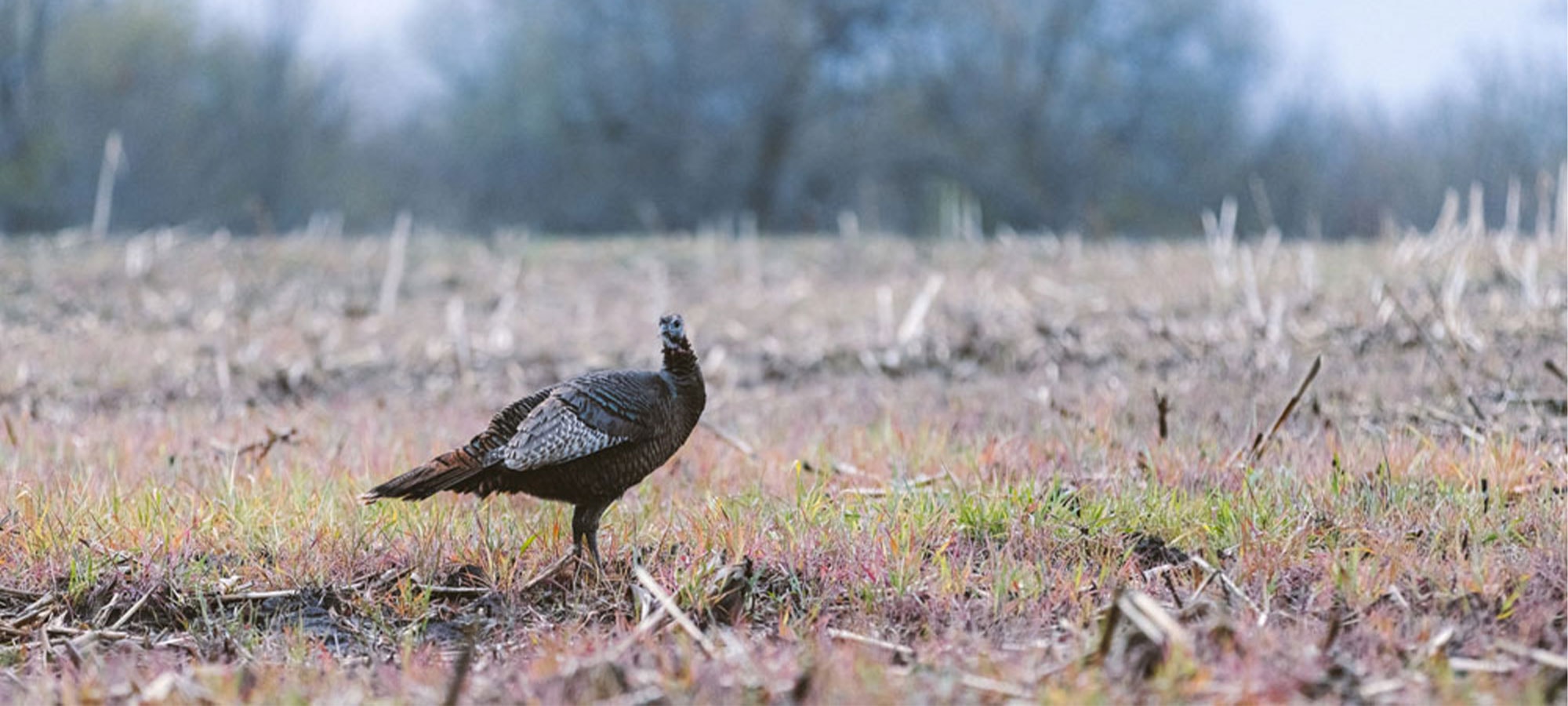Wild turkeys in much of their native ranges are declining. This is the sad state of affairs for the beloved wild turkey. Although things are declining, there is a lot of influence that we can have to move the needle forward on turkey reproduction. There are many different factors that contribute to the decline of the wild turkey. One of the biggest factors that has drastically reduced the successfulness of reproduction, is the loss of both adequate nesting and brood rearing cover on the landscape. These are specific habitat needs for the wild turkey for them to properly execute a success rearing of poults. Nesting habitat is less specific than brood rearing, a wild turkey hen can place her nest in various locations such as a downed tree top, blackberry patch, shrub pocket, or adjacent to a clump of native grass. That can be commonly found, but here is the kicker, it has to be in close proximity to brood rearing cover. So, now let’s discuss brood rearing cover, there is not one specific type of plant, but more a collection of plant types growing together, such as shrubby cover, bunch grasses, annual weeds, bare ground, and overhead protection from these vegetation types. Once hatched, turkey poults require bare ground for easy mobility, annual weeds to bring in the insects for foraging and overhead protection. These vegetation types all composed into one location is essential and often referred to as early successional vegetation. So remember the key is proper nesting cover must be in close proximity to ideal brood rearing cover, think 300 yards or less, but adjacent is even better!
A recent research study from the University of TN showed that 45% of hens attempted to nest in just 7.5% of the landscape. Guess what the vegetation type was in that 7.5%, both early successional vegetation and shrubs. A large percentage of hens overtly sought after a small fraction of the landscape to conduct the most important life cycle trait, reproduction. If only 7.5% of the landscape offered ideal nesting cover, one could suggest that the other 55% of hens did not have relative access to this limited cover type. This obvious selection of vegetation cover should be a light bulb for hunters and land managers. Essentially, it is a call to action! We need more of the landscape in early successional cover and shrublands if we want to keep producing turkeys on our landscape. We need to give them what they want and turn what research provides us into action.

There are no doubt other factors chipping away at turkey numbers as well such as, predation, early opening spring turkey season dates, urbanization, and many more. However, if we don’t offer what turkeys need on the landscape first and foremost to reproduce with the most success as possible, then they are doomed from the start.
If you are looking to create early successional cover, here are a few techniques to use to increase nesting and brood rearing success on your property. Edge feathering, cool-season grass removal, prescribed fire, TSI, leave agricultural fields fallow, and pollinator plantings. There are also activities to avoid that will disrupt or decrease critical habitat for young wild turkeys. These activities include, mowing, manicuring food plots, avoiding management in the timber, farming fencerow to fencerow, food plotting every native opening, and overgrazing pastures.

As hunters who enjoy a spring morning chasing longbeards, we need to work together to improve the habitat. A few simple changes to a farm can increase the acres offered in early successional vegetation.

